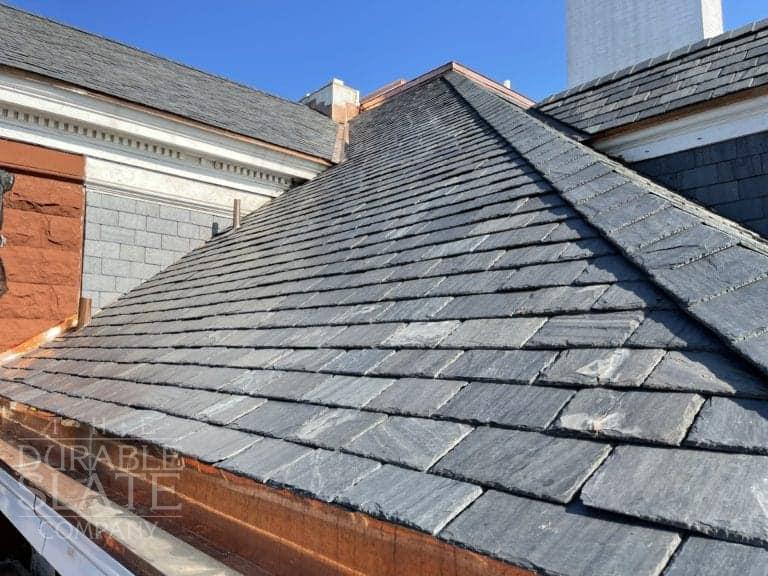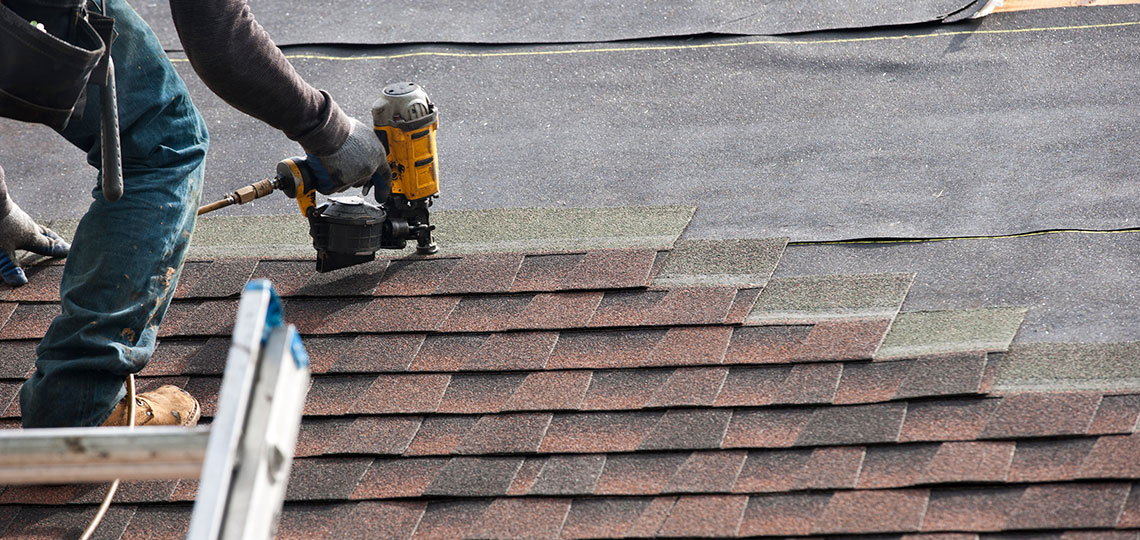The Value of Picking Skilled Roofing Companies Gainesville Florida
The Value of Picking Skilled Roofing Companies Gainesville Florida
Blog Article
Ideal Practices for Ensuring Correct Roof Ventilation
Guaranteeing correct roof covering ventilation is vital for the durability and performance of a roof. A well balanced intake and exhaust vent ratio, generally 1:300, plays a pivotal function, with intake vents ideally positioned at the lower edge of the roofing system for trendy air access and exhaust vents at the peak for cozy air leave. Normal examinations to identify obstructions and maintain clear airflow are critical. Keeping insulation away from vents is important to prevent airflow limitation. Understanding these foundational components establishes the phase for even more detailed understandings into installation and upkeep practices that can considerably boost your roof covering system's performance.
Understand Air Flow Basics
Properly understanding ventilation essentials is vital for making sure the durability and performance of roof. Effective air flow mitigates dampness accumulation and temperature extremes in the attic, both of which can result in substantial structural damage gradually. A well-ventilated roof assists in avoiding common issues such as mold and mildew growth, wood rot, and ice dams, which can compromise the honesty of the roofing materials and the underlying structures.
The key objective of air flow is to promote the motion of air, enabling a regular exchange in between the outside and interior environments. This equilibrium is accomplished through a combination of intake and exhaust vents that collaborate to keep optimal air movement. Intake vents, typically situated along the soffits or eaves, permit fresh air to get in the attic room, while exhaust vents, usually situated at or near the roofing system ridge, enable hot, humid air to get away.
Secret aspects influencing the effectiveness of roofing system ventilation include correct positioning, sufficient sizing, and guaranteeing that both consumption and exhaust vents are unobstructed. Normal evaluation and maintenance are important to recognize prospective obstructions, damage, or inadequacies in the ventilation system, thereby protecting the roofing system's efficiency and resilience.
Kinds Of Roofing Vents
Roof covering vents play an essential function in maintaining efficient attic room ventilation and, by expansion, the general health and wellness of the roofing system. Different types of roofing vents are offered, each with one-of-a-kind benefits customized to particular roof covering needs.

Soffit vents are set up under the eaves and job in tandem with roofing vents to guarantee a well balanced intake and exhaust system. By permitting cooler air to go into from below, soffit vents facilitate the expulsion of warm air via top vents. Gable vents, located on the exterior walls of the attic room, deal another effective service, particularly in homes with saddleback roofs.
Examine Your Existing Air Flow

Following, think about the age and condition of your roofing products and air flow parts. Older systems may not abide by present structure codes or may have degraded with time, lowering their performance. Conduct a comprehensive exam to identify any indicators of deterioration, such as rust, damage, or voids that could jeopardize the system's performance.
In addition, gauge the attic temperature level and humidity levels. High temperature levels and moisture can indicate poor browse around this site ventilation.
Setup Best Practices
Efficient installment of roof ventilation systems is critical for making sure optimal performance and longevity. Proper setup starts with comprehending the details ventilation needs of the structure and the roof it covers. This involves determining the appropriate proportion of consumption to tire vents, usually adhering to the 1:300 regulation, which states one square foot of ventilation for every 300 square feet of attic room flooring space.

Intake vents ought to be installed at the roof covering's reduced side, usually in the soffits, to enable trendy air to get in. Exhaust vents, on the various other hand, must be installed near or at the roof covering's optimal to facilitate the exit of warm, moist air.
Seal all vent connections carefully to avoid air leakages and possible water infiltration. Usage top notch materials and follow manufacturer guidelines to make sure longevity and performance. Additionally, incorporating ridge vents with baffles can substantially improve air flow performance by avoiding wind-driven rain and snow from entering the attic.
Ultimately, accurate installation of roof covering air flow systems mitigates potential issues such as mold and mildew development, ice dams, and structural damage, making certain the roofing's integrity and the building's general wellness.
Regular Upkeep Tips
Consistency in maintenance practices is basic to guaranteeing the long-term efficiency of roofing air flow systems. Normal examinations are crucial, ideally executed biannually-- in the spring and fall. Throughout these examinations, make sure that vents are totally free of particles, nests, and various other obstructions that might impede air movement. Inspect for any indicators of dampness accumulation or mold and mildew, as these can suggest inappropriate air flow or leakages (gainesville fl roofing companies).
Cleaning up the vents is another vital job. Use a soft brush or a vacuum cleaner to eliminate dirt and debris from intake and exhaust vents. Be careful not to harm the vent screens or louvers during the procedure. Furthermore, inspect the attic space for any type of indicators of water damages, which might jeopardize the honesty of the roof covering system.
Correct insulation is equally vital. Guarantee that attic insulation does not obstruct the vents, as this can seriously limit airflow. If any kind of insulation has actually moved or cleared up, rearrange or change visit site it to keep an effective obstacle.
Lastly, change any type of harmed or missing parts promptly. Broken vents, split roof shingles, or scrubby flashing can all add to poor ventilation and should be addressed right away. Normal upkeep guarantees that the roof covering air flow system works efficiently, thus expanding the life-span of the roofing system itself.
Conclusion
Making sure proper roofing ventilation is extremely important for maintaining the performance and sturdiness of a roof covering system. Adherence to the 1:300 consumption and exhaust vent ratio, combined with the calculated positioning of vents, is vital.
A balanced intake and exhaust vent ratio, frequently 1:300, plays an essential duty, with intake vents ideally positioned at the reduced side of the roofing system for trendy air access and exhaust vents at the height for cozy air leave. Intake vents, normally situated along the soffits or eaves, enable fresh air to go into the attic room area, while exhaust roofing companies gainesville florida vents, often positioned at or near the roof ridge, make it possible for warm, damp air to escape.
Soffit vents are set up under the eaves and work in tandem with roof covering vents to ensure a balanced consumption and exhaust system. By permitting cooler air to enter from below, soffit vents facilitate the expulsion of hot air via upper vents. Adherence to the 1:300 consumption and exhaust vent ratio, combined with the strategic positioning of vents, is necessary.
Report this page